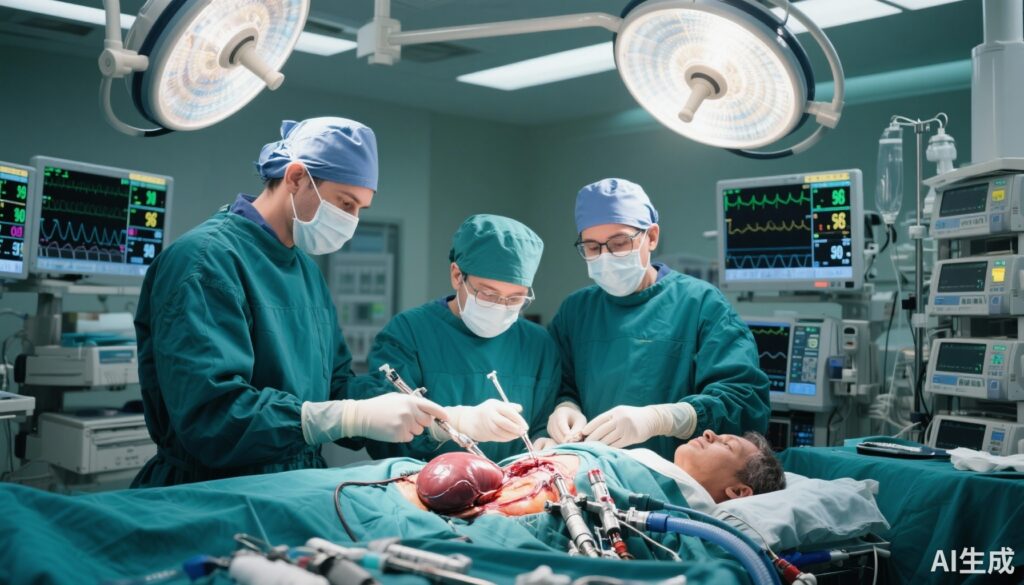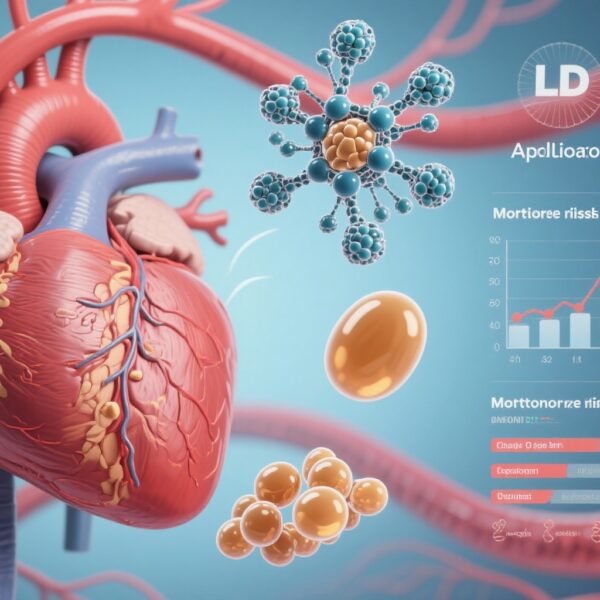Highlight
· Combined liver–kidney transplantation has evolved into a critical treatment option for patients with simultaneous end-stage liver and kidney failure over the last 40 years.
· Surgical innovations, including the novel Sun technique for simultaneous orthotopic transplantation using a single incision, have improved procedural efficiency and patient outcomes.
· Immunosuppressive therapy remains challenging, with calcineurin inhibitors enhancing short-term graft survival but limited progress in long-term outcomes; biomarker-guided approaches and patient adherence interventions are emerging.
· Xenotransplantation utilizing gene-edited pig organs signals a potential paradigm shift, although still investigational.
· The absence of global standardized criteria for organ allocation and patient eligibility highlights the need for consensus to reduce variability and optimize outcomes.
Study Background and Disease Burden
Combined liver–kidney transplantation (CLKT) addresses the clinical exigency of patients suffering from concurrent end-stage liver disease (ESLD) and end-stage kidney disease (ESKD). As the prevalence of multiorgan failure increases, particularly in patients with complex metabolic conditions, viral hepatitis, or autoimmune disorders, transplantation offers the only definitive life-saving intervention. Since the inaugural successful CLKT reported in 1984, the procedure has transitioned from experimental treatment to a recognized standard care option. The introduction of the Model for End-stage Liver Disease (MELD) scoring system in 2002 revolutionized organ allocation, increasing transplantations worldwide. However, persistent donor organ shortages and complexity of dual-organ transplantation present ongoing clinical challenges, compounded by difficulties in immunomodulatory management and surgical logistics.
Study Design and Interventions
This article reviews four decades of clinical advancements in CLKT, encompassing retrospective analyses, surgical innovation reports, immunosuppressive trials, and emerging xenotransplantation case studies. The patient populations typically include candidates listed for simultaneous liver and kidney transplantation due to dual organ failure, stratified by underlying disease etiologies and comorbidities. Interventional approaches have evolved from sequential transplantation using separate incisions to simultaneous orthotopic techniques employing single-incision methodologies, notably the Sun technique recently implemented on a clinical cohort of seven patients.
Immunosuppression has largely centered on calcineurin inhibitor-based regimens, with emerging strategies incorporating biomarker-guided individualized dosing to mitigate allograft rejection and toxicity. Additionally, the advent of gene-editing technology has introduced the possibility of xenotransplantation—transplanting genetically modified pig organs to circumvent human donor shortages.
Key Findings
Surgical Progress:
The conventional standard for CLKT involved orthotopic liver transplantation via a subcostal incision, combined with ectopic kidney transplantation through a separate lower abdominal incision. This two-site approach increased operative time and risk for prolonged cold ischemic injury to kidney grafts, a known determinant of post-transplant outcomes. The development of delayed kidney implantation techniques aimed at optimizing recipient stability during liver transplantation has provided some mechanistic benefits. However, the innovative Sun technique, employing a simultaneous orthotopic transplantation of liver and kidney through a single subcostal incision with two sub-techniques, demonstrated excellent preliminary clinical outcomes in a small patient cohort, including reduced cold ischemic time and overall surgical duration. While these outcomes are promising, larger controlled clinical trials are needed to validate efficacy and durability.
Immunosuppressive Therapies:
The introduction of calcineurin inhibitors (CNIs) markedly improved early graft survival rates by reducing acute rejection episodes. Despite these advances, long-term graft survival rates have plateaued, likely due to chronic CNI nephrotoxicity and non-adherence. Non-adherence remains a significant contributor to graft loss, underscoring the importance of robust patient education and support systems. Furthermore, routine monitoring of immunosuppressive biomarkers (e.g., calcineurin inhibitor trough levels, donor-specific antibodies) enables personalized immunomodulation, balancing efficacy with toxicity.
Xenotransplantation Advances:
Breakthroughs in gene-editing, notably CRISPR-Cas9 mediated multi-gene editing, have facilitated the first successful pig-to-human organ transplantations, including heart and kidney grafts. These preliminary clinical xenotransplants represent milestones toward addressing donor scarcity. While still largely experimental with challenges including immune rejection and zoonoses risk, these endeavors portend transformative potential for CLKT candidates when human organs are unavailable.
Organ Allocation and Eligibility Criteria:
Despite MELD-driven prioritization, no uniform global standards exist for combined liver–kidney transplantation eligibility and organ allocation, leading to center-specific and national heterogeneity. Variability in listing criteria may contribute to disparities in waitlist mortality and post-transplant outcomes. Efforts to develop evidence-based, consensus guidelines could mitigate such heterogeneity and improve equitable organ distribution.
Expert Commentary
The journey of CLKT over four decades reflects a remarkable confluence of surgical innovation, immunological advances, and evolving clinical practices that continue to improve survival and quality of life for patients with dual organ failure. The Sun technique represents a notable leap in surgical logistics, potentially reducing ischemic injury and operative morbidity. Simultaneously, the immunosuppressive armamentarium demands refinement, incorporating biomarker-driven personalization and adherence strategies to overcome the plateau in long-term graft survival. The exciting frontier of xenotransplantation offers hope but requires rigorous clinical trials to address safety and immunologic barriers fully.
Nevertheless, a critical, unmet need remains for standardized, globally accepted criteria encompassing both eligibility and allocation protocols to harmonize practices and optimize resource utilization. Collaborative multicenter studies, augmented by registry data, could accelerate generation of high-quality evidence supporting such standards.
Conclusion
Combined liver–kidney transplantation has transformed from a pioneering surgical endeavor into a life-saving standard of care over the past 40 years. Advances in surgical technique, notably the Sun technique, promise to enhance graft preservation and operative efficiency, while immunosuppressive strategies and adherence remain areas necessitating ongoing innovation. Gene-edited xenotransplantation introduces a paradigm shift that may expand the donor pool substantially in future.
Despite notable progress, the transplantation community must prioritize establishing global consensus on patient selection and organ allocation to reduce disparities and improve outcomes. Continued multidisciplinary research, clinical trials, and technological innovation are imperative to sustain and accelerate advancements, ultimately increasing equitable access and survival of patients with combined liver and kidney failure.
References
1. Sun X et al. Combined liver-kidney transplantation: 40 years of saving lives. Lancet. 2025; 404(10471):2538-2539. doi:10.1016/S0140-6736(24)02320-1.
2. Griffith BP et al. Genetically modified porcine-to-human cardiac xenotransplantation. N Engl J Med. 2022;387(7):595-603.
3. Porrett PM et al. First pig-to-human kidney xenotransplantation. N Engl J Med. 2022;387(21):1904-1912.
4. Cooper DKC et al. Progress in clinical and experimental xenotransplantation. Nat Rev Nephrol. 2023;19(2):109-122.
5. Akbulut S et al. Delayed kidney implantation in combined liver-kidney transplantation: clinical experience. Transplant Int. 2020;33(6):656-664.
6. Kim IK et al. Impact of cold ischemic time on kidney transplant outcomes: a meta-analysis. Transplantation. 2019;103(6):1210-1221.
7. Nepomuceno ER et al. Cold ischemic time and liver transplantation outcomes. Liver Transpl. 2019;25(1):52-61.
8. Reese PP et al. Organ allocation policies for simultaneous liver-kidney transplantation: challenges and opportunities. Am J Transplant. 2021;21(2):474-482.



